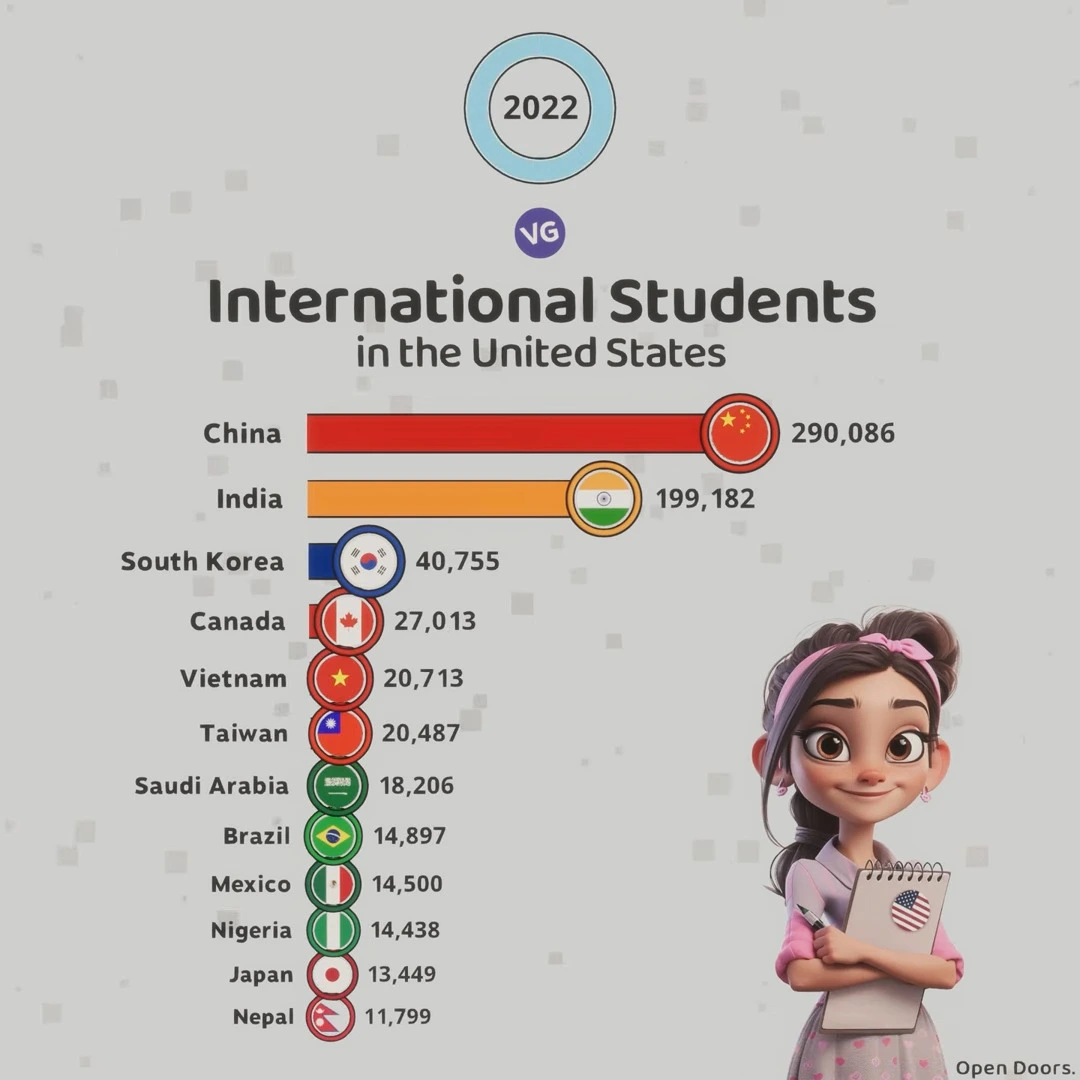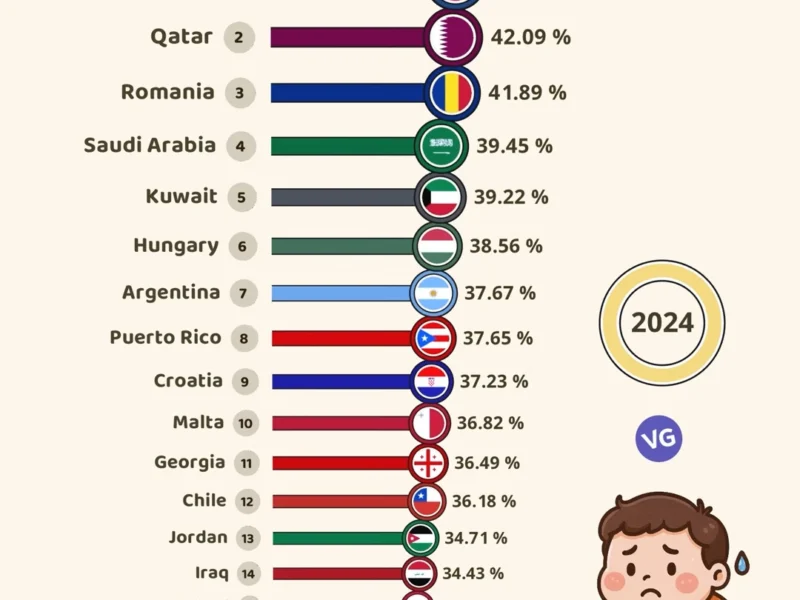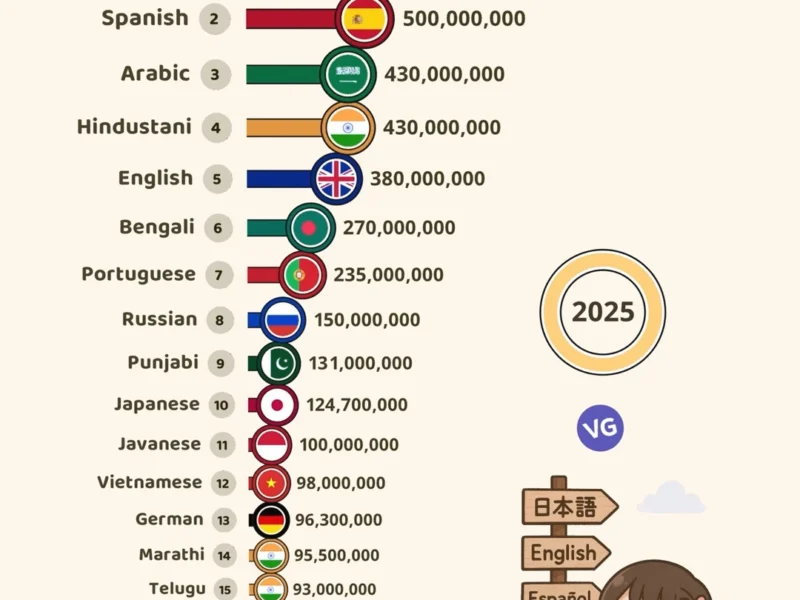The 2022 data on international students in the United States reveals fascinating patterns about global educational migration and highlights the significant role of Asian countries in contributing to America’s diverse academic landscape.
Top 12 Countries Sending International Students to the U.S. (2022)
| Rank | Country & Flag | Number of Students |
|---|---|---|
| 1 | 🇨🇳 China | 290,086 |
| 2 | 🇮🇳 India | 199,182 |
| 3 | 🇰🇷 South Korea | 40,755 |
| 4 | 🇨🇦 Canada | 27,013 |
| 5 | 🇻🇳 Vietnam | 20,713 |
| 6 | 🇹🇼 Taiwan | 20,487 |
| 7 | 🇸🇦 Saudi Arabia | 18,206 |
| 8 | 🇧🇷 Brazil | 14,897 |
| 9 | 🇲🇽 Mexico | 14,500 |
| 10 | 🇳🇬 Nigeria | 14,438 |
| 11 | 🇯🇵 Japan | 13,449 |
| 12 | 🇳🇵 Nepal | 11,799 |
Leading Nations and Key Patterns
Asian Dominance
China and India stand out as the overwhelming leaders in sending students to the United States:
- China leads with 290,086 students
- India follows with 199,182 students
- Together, these two countries account for nearly half a million international students
East Asian Representation
There’s strong representation from East Asian nations:
- South Korea ranks third with 40,755 students
- Taiwan contributes 20,487 students
- Japan sends 13,449 students
Notable Regional Diversity
The data shows interesting patterns across different regions:
- North America: Canada (27,013 students)
- Southeast Asia: Vietnam (20,713 students)
- Middle East: Saudi Arabia (18,206 students)
- Latin America: Brazil (14,897) and Mexico (14,500)
- Africa: Nigeria (14,438 students)
- South Asia: Nepal (11,799 students)
Analysis of Trends
Economic Implications
The large number of international students has significant economic impacts:
- Contribution to US universities’ revenue
- Economic boost to local communities
- Cultural exchange opportunities
- Potential for future business and diplomatic relationships
Regional Analysis
- East Asia dominates with multiple countries in the top spots
- South Asian representation is strong with India and Nepal
- The Americas show moderate representation through Canada, Brazil, and Mexico
- Middle Eastern presence is primarily through Saudi Arabia
- African representation is led by Nigeria
Educational Significance
This distribution reflects several key factors:
- Economic development levels in sending countries
- Strong educational partnerships
- Historical ties with the United States
- Growing middle classes in developing nations
- The global reputation of US higher education
This data provides valuable insights for:
- University administrators planning recruitment strategies
- Policy makers considering international education policies
- Economic planners anticipating student-related economic impacts
- Cultural exchange program coordinators
The diversity of international students continues to enrich US higher education while building crucial bridges between nations and cultures.



